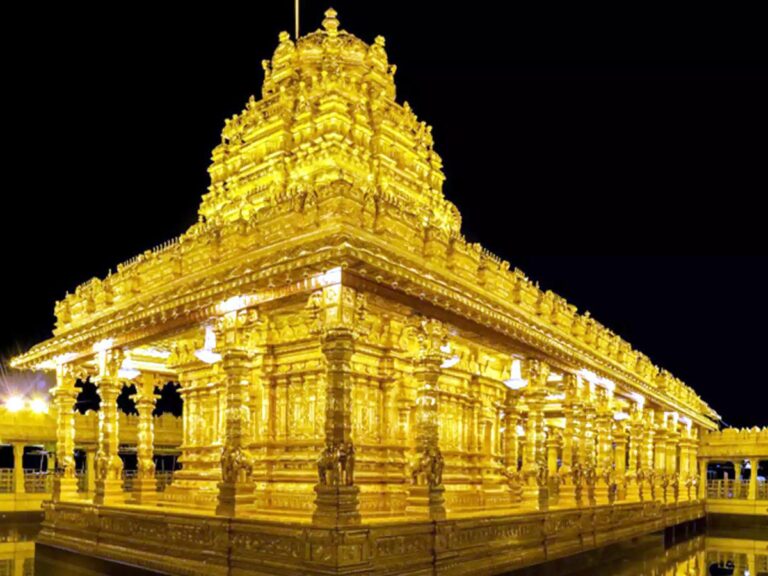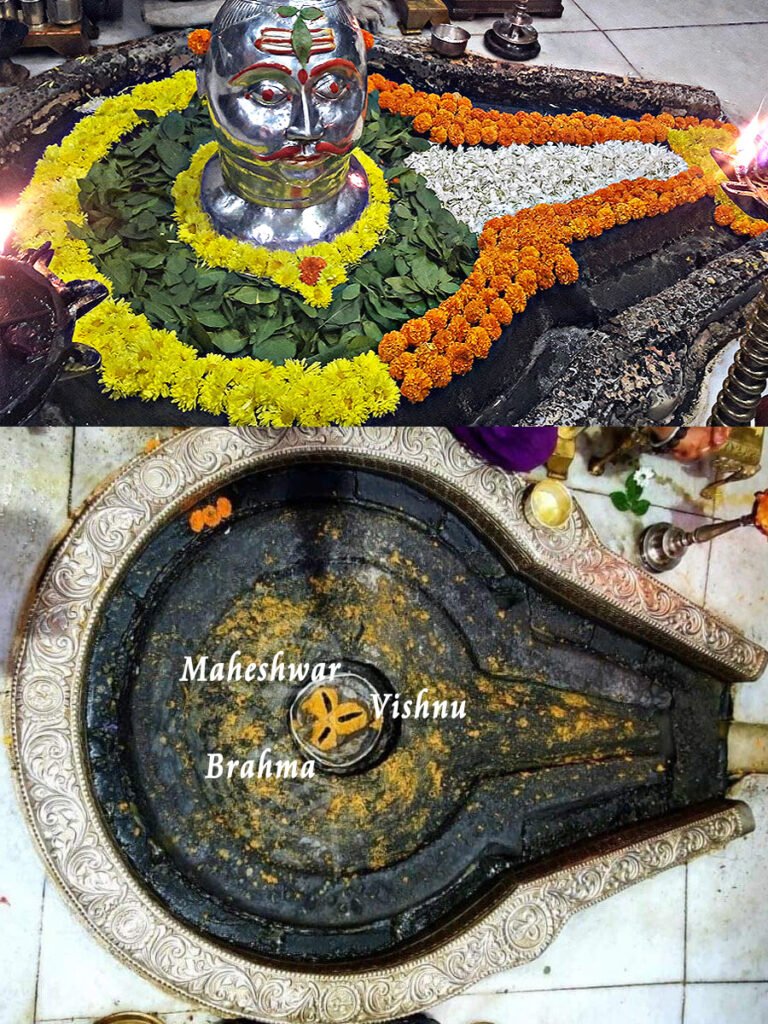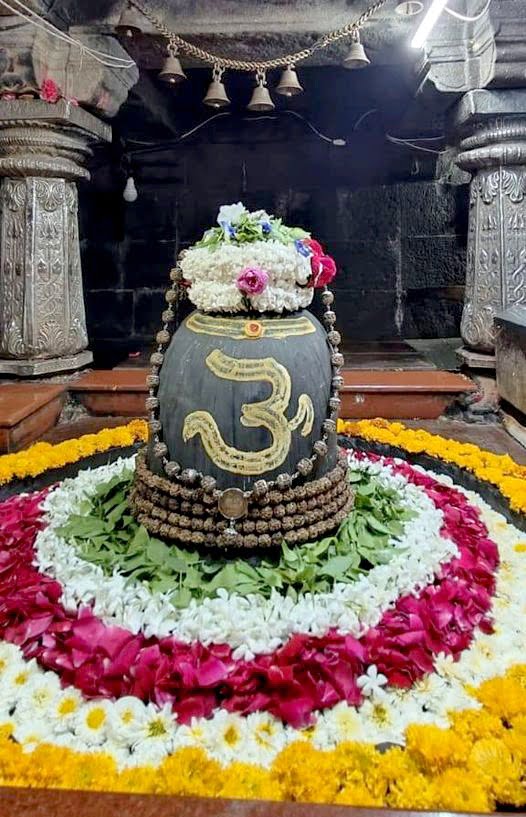Kheer Bhawani Temple Raginia Devi
Kheer Bhawani Temple at Jammu & Kashmir: Namaste, everyone! And welcome aboard a very special adventure with me, your courteous tour guide, as we travel to a location that is full of magic and peace. Today, we’re off on an adventure to discover all about the Kheer Bhawani Temple. Have you ever seen a spring that changes color? Or a goddess who is also referred to as a mother? Well, buckle up, because we’re in for a treat of learning all about that and much more!
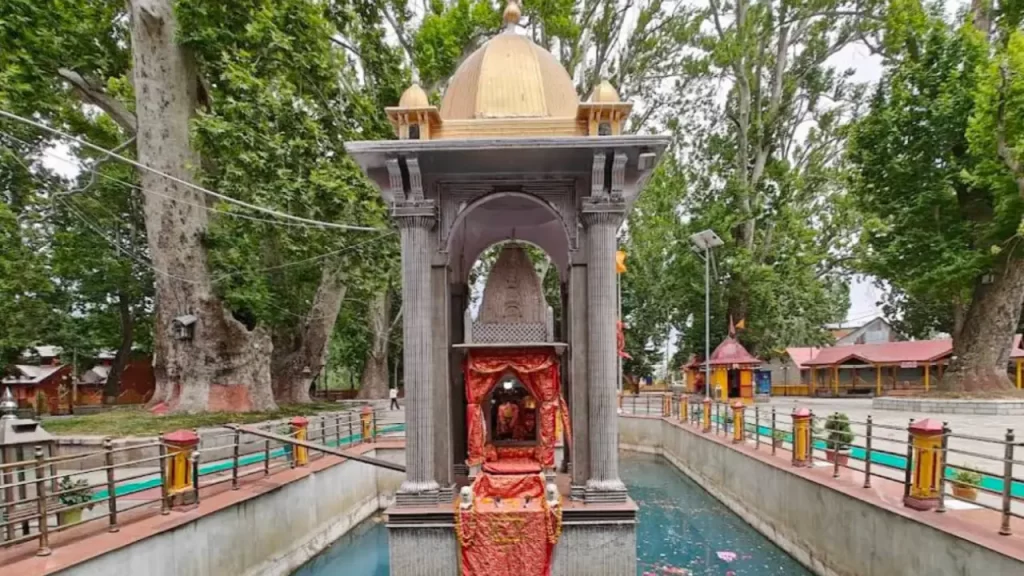
Contents
- 1 My First Experience of Kheer Bhawani Temple
- 2 A Glimpse into the Past: Kheer Bhawani Temple History
- 3 The Wonderful Story: Legend of Kheer Bhawani Temple
- 4 Why It’s So Important: Significance of Kheer Bhawani Temple
- 5 The Appearance of the Temple: Architecture
- 6 Fun Facts and Beliefs: Myths and Beliefs
- 7 When to Go: Kheer Bhawani Temple Timings
- 8 Other Adventures Nearby: What to Do Near Kheer Bhawani Temple
- 9 Your Journey to Peace: How to Reach the Temple
- 9.0.1 Nageshwar Jyotirlinga Dwaraka: 7th CE Temple with Divine Powers
- 9.0.2 Grishneshwar Temple: Wealth and Pleasure at Shiva’s Feet
- 9.0.3 Kedarnath Temple: One of Jyotirling & Char Dham
- 9.0.4 Trimbakeshwar Jyotirlinga Temple
- 9.0.5 Sacred Kashi Vishwanath Temple: 11th Jyotirling of Liberation
- 9.0.6 Aundha Nagnath Temple: 8th Jyothirling with Divine Serpents
- 9.0.7 My Last Thoughts on Kheer Bhawani Temple
My First Experience of Kheer Bhawani Temple
I recall the first time I went to the Kheer Bhawani Temple. I was around your age, or at least a bit older, and my grandparents took me there. I had heard about it, but nothing could have prepared me for the sense of calmness that descended on me as soon as we entered. The wind was different, lighter, and had a soft whisper of prayers on the breeze. It was as if entering a book we read as children, and since then, the Kheer Bhawani Temple is one of my most favorite things on the entire planet. I wish to impart that magic to you as well today.
Read More>> Simhachalam Temple – Varaha Lakshmi Narasimha Swamy
A Glimpse into the Past: Kheer Bhawani Temple History
Every old building has a history, right? And the Kheer Bhawani Temple has a very long and fascinating one. Think of a time, many, many years ago, even before your grandparents were born. This temple is for a very special goddess, Mata Raginia Devi. She is also referred to as Kheer Bhawani. “Kheer” is a sweet pudding prepared with rice and milk, and “Bhawani” is meaning goddess. It’s told that this temple has been worshiped for a very, very long time.
Years went by, and many changes the temple witnessed. At times, it was rebuilt or fortified, but never did its spirit change. It’s similar to an old tree that becomes larger and stronger with age, but its roots remain solidly in the ground. The individuals who adore and nurture the Kheer Bhawani Temple have ensured it remains lovely and inviting to all. It is a spot where generations have visited to seek their prayers and feel intimate with the higher power.

The Wonderful Story: Legend of Kheer Bhawani Temple
Now, my favorite part – the legends! Each temple has a unique tale of how it was built, and the Kheer Bhawani Temple has a real doozy. Picture a time when the goddess herself, Mata Raginia Devi, decided on this exact location!
One of the most famous stories is that the goddess, in her true form, was actually in Sri Lanka! But due to some tough times and at the request of a great sage named Maharishi Ragnya, she left. She was taken on the back of a sacred bird, a hansa, all the way to this lovely spot in Kashmir. She was picked because it was so clean and serene, ideal for a goddess.
Another lovely myth is about the spring inside the temple complex. This spring is said to be where the goddess herself lives. And here’s the most incredible part: the color of the spring water is supposed to change! It is said that if the water is black, it could be that there’s something hard ahead. But if it is a light, clear color, then good times are coming!. Imagine you are standing in front of a spring and noticing it narrate stories about the future to you! It is such a magical part of the Kheer Bhawani Temple. This is a particularly special experience for many when visiting the Kheer Bhawani Temple.
Read More>> Divine Mata Vaishno Devi Temple | Shaktipeeth Complete Guide
Why It’s So Important: Significance of Kheer Bhawani Temple
The Kheer Bhawani Temple isn’t only a nice spot; it’s an extremely significant one, particularly for a community known as Kashmiri Pandits. They’re a people who’ve lived in Kashmir for an extremely long time, and Mata Raginia Devi is their Kuladevi, their guardian goddess. To them, the Kheer Bhawani Temple is a second home, where they are very much attached to their roots and their religion.
There’s a grand festival every year, known as Jyeshtha Ashtami. Thousands of devotees, from around the globe, visit the Kheer Bhawani Temple to observe this day. It’s a celebratory day with prayers, hymns, and offerings of kheer (sweet rice pudding) to the goddess. Picture a grand family reunion, but with everybody visiting to thank and pray to their favorite goddess! It’s a period of intense devotion and a fabulous spectacle of faith. A trip to the Kheer Bhawani Temple during this festival is an experience you won’t ever forget. It’s a period when the religious energy of the Kheer Bhawani Temple seems especially strong.
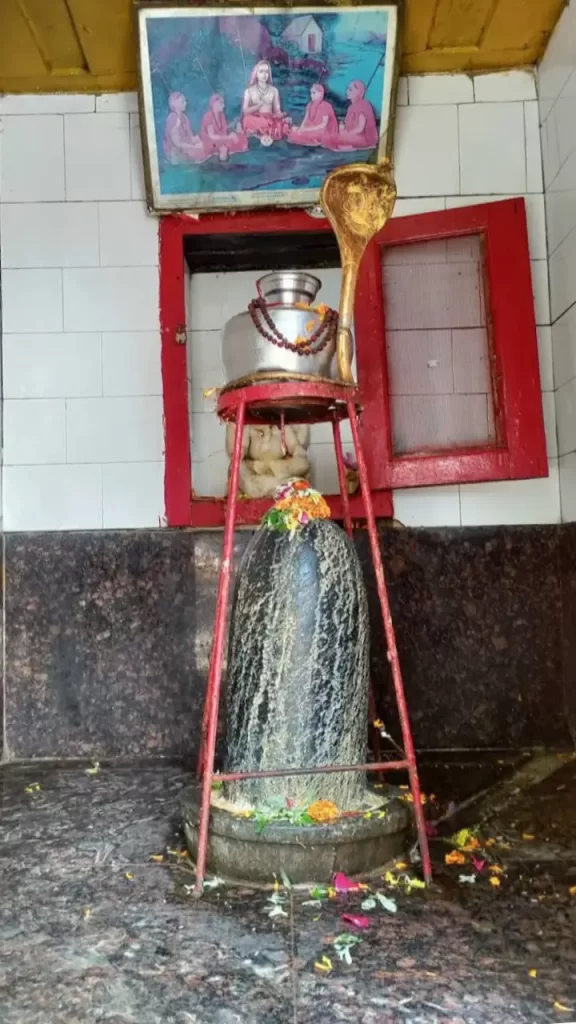
The Appearance of the Temple: Architecture
Now, let’s discuss what the Kheer Bhawani Temple really looks like! Picture a lovely, serene area. The temple is constructed around a revered spring, and that’s the center of everything. It’s not a terribly tall or grand building, but it possesses a plain and lovely prettiness.
The central shrine in which the goddess is revered is typically a smaller, intricately designed building. You’ll notice traditional Kashmiri architecture, i.e., the houses are typically built of wood and local rocks and blend perfectly with the surrounding nature. The roofs are typically sloping, which is ideal for areas that receive heavy snowfall!
Somewhere around spring season, you can find walks and even little gardens in which you can sit and absorb the serene environment. It’s a temple meant for peaceful contemplation and prayer where the natural sounds and soft murmurs of piety create a very soothing ambience. The architecture of the Kheer Bhawani Temple only indicates its religious cause – plain, simple, and strongly related to nature.
Read More>> Martand Sun Temple: Where Sunbeams Kiss Stone
Fun Facts and Beliefs: Myths and Beliefs
As with all ancient and revered sites, the Kheer Bhawani Temple has its own set of amusing myths and beliefs that have been passed down for centuries. We have already discussed the spring water changing colors, one of the most popular beliefs connected with the Kheer Bhawani Temple. People actually believe that the goddess signals them through the water!
Another belief is concerning the offerings. When devotees visit the Kheer Bhawani Temple, they present milk, kheer, and flowers to the goddess. It’s believed that these offerings are accepted happily by Mata Raginia Devi, and she showers her devotees with peace and prosperity in return. It’s a lovely exchange of devotion and love.
It also has the account of how the goddess guards her devotees. Various individuals narrate personal experiences of how their wishes were granted when they went to the Kheer Bhawani Temple. These accounts, as narrated by parents to their kids, fortify the faith of the people and render the temple an even more divine place. It’s these individual experiences that give the Kheer Bhawani Temple such vitality and strength.

When to Go: Kheer Bhawani Temple Timings
If you’re planning to visit the beautiful Kheer Bhawani Temple, it’s nice to know when it opens! Most of the time, the temple is open from early morning to late evening. The timings may slightly vary depending on the time of year or during special festivals, but normally, you can go there from around 6:00 AM to 8:00 PM.
But the ideal time to visit the Kheer Bhawani Temple would be in the morning or late afternoon when the light is gentle and the climate is calmest. On festival days like Jyeshtha Ashtami, the temple remains open for quite extended hours of the day, and in some instances even at night, to meet the high volume of devotees. It’s always best to verify online or ask a local guide for the latest timings when you arrive, particularly if you are coming from afar.
Other Adventures Nearby: What to Do Near Kheer Bhawani Temple
A visit to the Kheer Bhawani Temple is only part of a fantastic journey to Kashmir! There are just so many other lovely sights to see in the surrounding area.
First, you can go to the Shalimar Bagh and Nishat Bagh, which are gorgeous Mughal gardens full of colorful flowers and fountains. You can imagine playing around these gardens like a prince or princess!
Then there’s that iconic Dal Lake in Srinagar, where you take a beautiful shikara ride. A shikara is an antique wooden boat, and to travel in one is to be sailing on a dream. You get to see floating markets and stunning houseboats!
For some adventure, you may go to Gulmarg, a well-known hill station famous for its breathtaking meadows and, during winters, skiing! It’s as if you step into a postcard.
And if you enjoy the natural world and animals, the Dachigam National Park is a good place to see some incredible animals, such as the elusive Kashmiri stag, or hangul.
So, a visit to the Kheer Bhawani Temple can be just one part of a greater, more thrilling journey across the wonderful land of Kashmir!
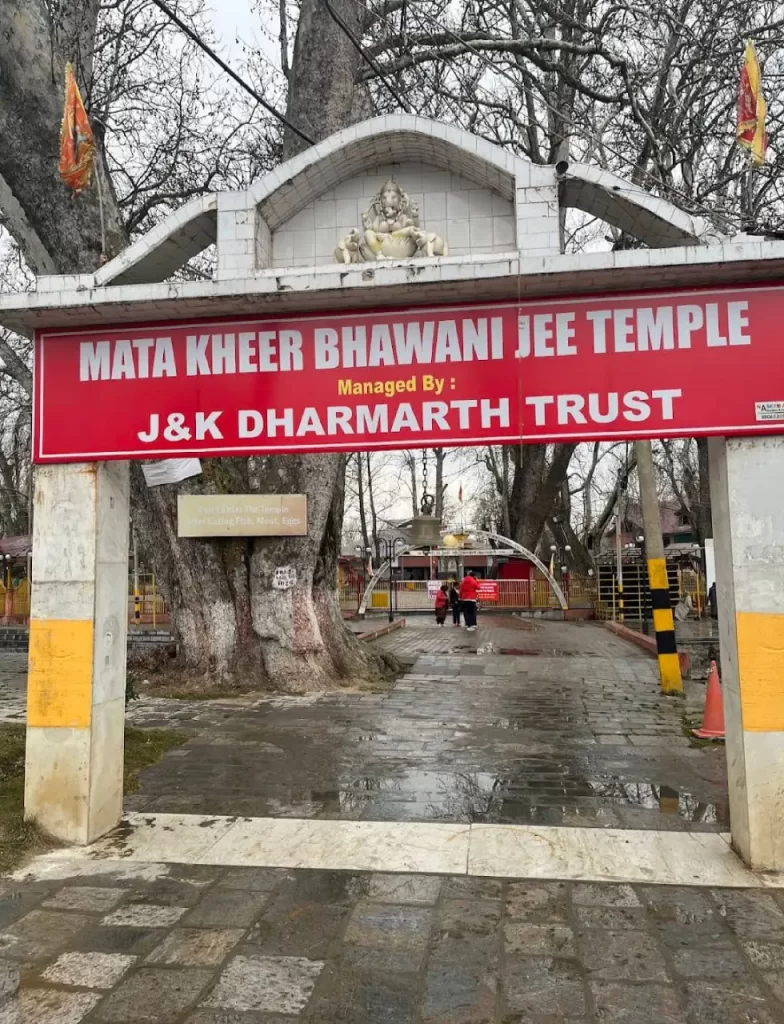
Your Journey to Peace: How to Reach the Temple
Reaching the Kheer Bhawani Temple is more accessible than you can imagine! The temple is situated in a village named Tulmulla in Ganderbal district of Jammu and Kashmir.
By Air: The nearest airport is at Srinagar. Srinagar has an international airport, and there are flights available from most major Indian cities. Once you arrive in Srinagar, you can hire a taxi or a bus to reach the temple. It’s a one-hour drive from Srinagar to the Kheer Bhawani Temple.
By Train: The nearest major rail station is in Jammu Tawi. From Jammu Tawi, you travel by train to Udhampur and then taxi or bus to Srinagar, and then continue to Tulmulla. It takes longer by train, but it can be very scenic since you get to view more of the landscape.
By Road: Kashmir is well-linked by road. You can travel by bus or hire a taxi from Srinagar or another nearby town. The roads are usually good, and the drive is very picturesque, with mountains and rivers on the way. If you are coming from within Kashmir, local buses and shared taxis are also easily available.
Regardless of how you get there, getting to the Kheer Bhawani Temple is all part of the experience, with great scenery and a feeling of anticipation for the serene destination that lies ahead.
My Last Thoughts on Kheer Bhawani Temple
And that’s it, my young adventurers! Our travels to the Kheer Bhawani Temple are at an end, but I hope the enchantment of this site remains with you. It’s not just a temple; it’s a site where history seems to whisper from every rock, where legends are brought alive, and where religion flows like the holy spring.
Remember, the Kheer Bhawani Temple is a site of serenity, a site of tales, and a site in which a very unique goddess, Mata Raginia Devi, protects her faithful. Whether you make it there in person or simply envision it from a distance, the aura of the Kheer Bhawani Temple guides us to the appeal of belief, the power of people, and the ever-present magic of our world. I hope you enjoyed our little escapade, and perhaps, hopefully, one day you’ll have the chance to see the magic of the Kheer Bhawani Temple firsthand. Until then, Shubh Yatra!


